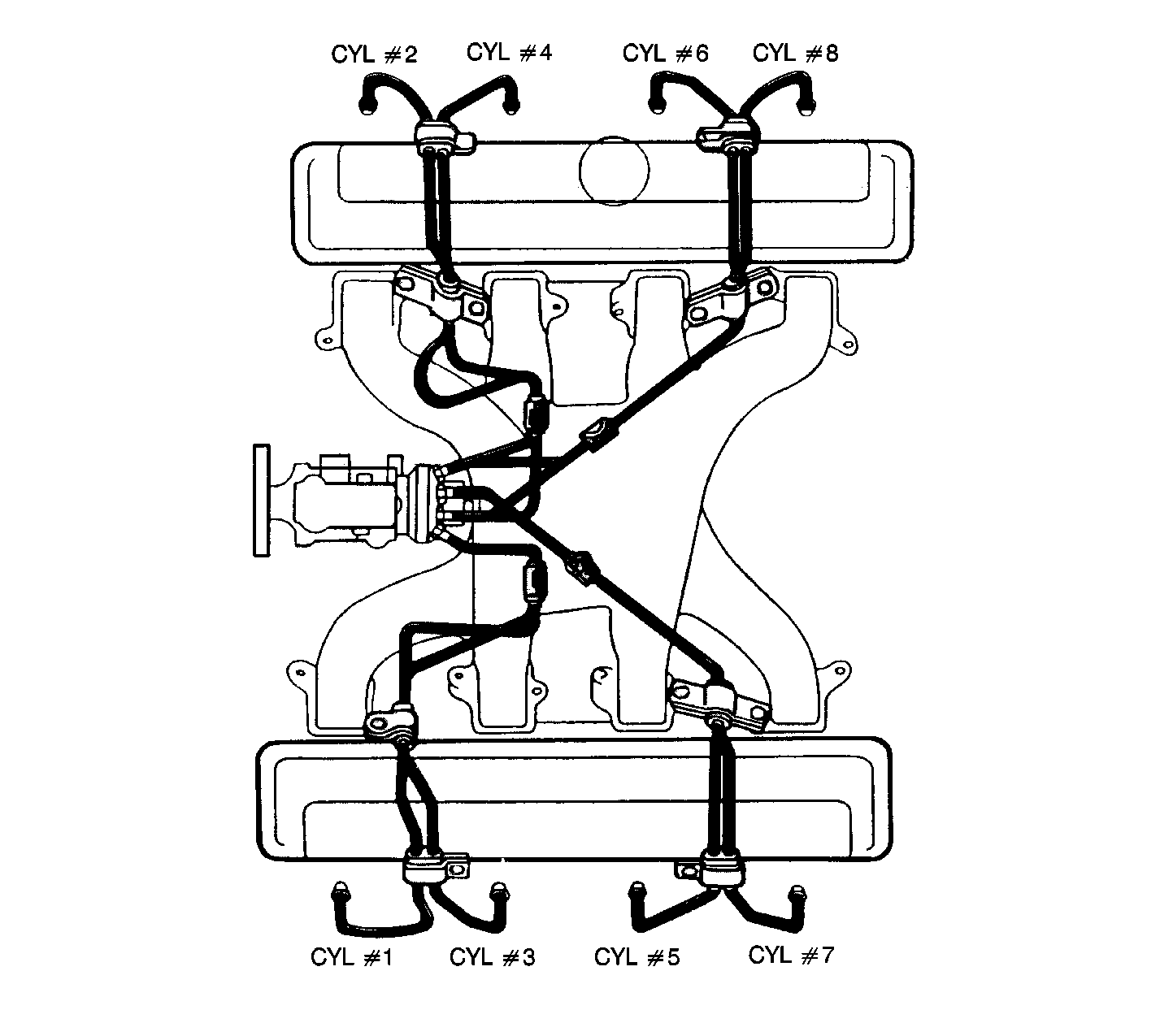
Circuit Description
The PCM has the ability to increase and decrease the amount of fuel to each cylinder to provide smooth idle operation. If the fuel correction amount exceeds define limits, DTC P0275 will set. This is a type D DTC.
Conditions for Setting the DTC
| • | Engine at idle. |
| • | Engine coolant at normal temperatures. |
| • | Cylinder fault must be constant. |
| • | Fuel correction amount exceeds limits (internal to PCM). |
| • | Conditions met for 2 seconds. |
Action Taken When the DTC Sets
The MIL will not illumante.The PCM will record operating conditions at the time the diagnostic fails. This information will be stored in Failure Records.
Conditions for Clearing the MIL/DTC
| • | A History DTC will clear when forty consecutive warm-up cycles that the diagnostic does not fail (coolant temperature has risen 5°C (40°F) from start up coolant temperature and engine coolant temperature exceeds 71°C (160°F) that same ignition cycle. |
| • | Use of a Scan tool |
Diagnostic Aids
Injector balance test on scan tool should be used to confirm fault cylinder problems. Scan tool will cutout specific cylinder requested. It is possible that if a cylinder balance fault has been detected and engine has been running for a long time, the PCM will try to increase or decrease fuel in other cylinders to compensate for a rough idle which can cause multiple cylinder balance DTCs to set. The scan tool snap shot mode can be used to properly identify the suspected cylinder. The most likely cause of cylinder balance DTCs are malfunctioning nozzles or engine mechanical (low compression) problems.
If multiple cylinder balance DTCs are set and no problem is found, its possible fuel system restrictions could cause fuel correction amounts to exceed limits. Check for the following:
| • | Pinched or restricted fuel feed lines between fuel tank and fuel injection pump. |
| • | Restricted fuel filter. |
| • | Fuel system waxing. |
Test Description
Number(s) below refer to the step number(s) on the Diagnostic Table.
Step | Action | Value(s) | Yes | No | ||||||
|---|---|---|---|---|---|---|---|---|---|---|
1 |
Important: Before clearing DTCs use the scan tool Capture Info to record freeze frame and failure records for reference, as data will be lost when Clear Info function is used. Was the Powertrain On-Board Diagnostic (OBD) System Check performed? | -- | ||||||||
Is there an RPM drop in the suspected cylinder? | -- | |||||||||
3 | DTC is intermittent. If no additional DTCs are stored, refer to Diagnostic Aids. If additional DTCs were stored refer to the applicable DTC table(s) first. Are any additional DTCs stored? | -- | Go to the Applicable DTC Table | Go to Diagnostic Aids | ||||||
4 | Check for the following basic engine mechanical or fuel delivery problems in that cylinder.
Was a repair performed? | -- | ||||||||
5 | Replace the fuel injection pump. Refer to Fuel Injection Pump Replacement . Is the action complete? | -- | -- | |||||||
6 |
Does the Scan Tool indicate that this diagnostic Passed? | -- | ||||||||
7 | Using the Scan Tool, select Capture Info, Review Info. Are any DTCs displayed that have not been diagnosed? | -- | Go to the Applicable DTC Table | System OK |
